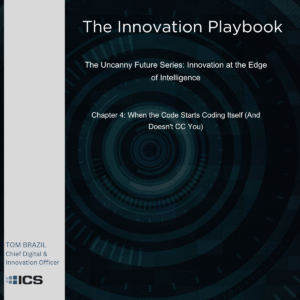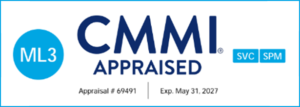Hang on to your hat—we’re not heading into the future; the future is coming AT us, full speed. Are you ready?
At ICS, we believe that standing still is not an option. As Chief Digital and Innovation Officer and one of the co-authors of “The AI Future,” a book with detailed research into the six major disruptive waves that have started impacting the world economy and will continue over the next 5 years. We’ve already passed Wave 1, and we are heavy into Wave 2.
Some are preparing in advance by looking beyond the horizon, and racing into Wave 3 of AI disruption: the era of Optimized Agent Networks. Here, the frontier isn’t just individual AI assistants, but swarms of collaborative, autonomous agents working in teams—able to solve problems, discover breakthroughs, and drive innovation at speeds no human team can match.
Why Wave 3 Matters—And Why It’s Coming Faster Than You Think
Our book, The AI Future, forecasts that by 2027, organizations will rely not just on generative AI but on teams of AI agents working together to solve cross-functional challenges. This isn’t science fiction: it’s already underway. Companies able to orchestrate these “agent networks” will innovate faster, respond to disruption, and unlock entirely new forms of value. Those who hesitate will quickly fall behind.
ICS’ Bold Step: Training Autonomous Agents on TRIZ
To seize this future, ICS is pioneering the next step: an autonomous AI Agent trained as an innovation practitioner—using the Theory of Inventive Problem Solving (TRIZ). TRIZ is a world-renowned, systematic methodology for invention, built on the analysis of millions of patents and decades of breakthrough innovation. Unlike brainstorming or random idea generation, TRIZ helps identify and resolve the core contradictions at the heart of any challenge, enabling truly novel, non-compromise solutions.
There are a handful of true TRIZ experts in the world. The reasons are simple:
- Complexity and Learning Curve: The full TRIZ toolkit, especially advanced methods like ARIZ (The Algorithm of Inventive Problem Solving) and the 76 Standards, is complex and has a steep learning curve for human practitioners.
- Abstractness: The high level of abstraction in the 40 Inventive Principles of TRIZ can make it difficult for novices to translate them into concrete, specific solutions.
These limitations, however, present clear opportunities for an AI-based system. An AI agent can master the complexity of the entire toolkit instantly, process abstract concepts without cognitive bias, and potentially identify new patterns by analyzing modern data sets at a scale far beyond human capability.
We’re not just building a single TRIZ Agent. Indeed, there are already a handful of OpenAI GPTs trained on the TRIZ approach. Our vision is to replicate and network these agents into an ecosystem, creating digital teams that collaborate, challenge each other, and co-create solutions—24/7, across every domain. Imagine an “innovation swarm” where autonomous agents apply the most advanced tools for creative problem-solving, identify ideal solutions, and scale their learning across the organization at exponential speed. To do this, we have not just a single agent trained in TRIZ, but a TRIZ facilitator that can guide and direct the replicated swarm.
Why TRIZ + AI Agent Networks Change the Game
- Systematic Breakthroughs: TRIZ transforms invention from an unpredictable art into a repeatable, scalable process—perfectly suited for AI.
- Cross-Domain Power: The abstraction process at TRIZ’s heart means solutions can leap from one industry to another, fueled by agents that never tire, never forget, and always learn.
- Exponential Collaboration: With agent networks, we move beyond isolated tools to true “digital teamwork”—where agents share knowledge, resolve contradictions, and orchestrate novel inventions together.
Preparing for the New Innovation Ecosystem
The AI Future is our guidebook, and it can be yours too. It explains not only what’s coming next with over 250 logical predictions, but also how leaders can get ready—right now:
- Build AI and agent literacy in your teams—fast.
- Invest in data and knowledge infrastructure, because AI agents are only as good as what they can learn from. When you are dealing with novel concepts, reinforcement of those advancements needs to be fed back in to eliminate unintelligent failures (failing to take into account new knowledge).
- Pilot agent networks in key business processes and innovation programs.
- Embrace frameworks like TRIZ to ensure your AI agents can solve the right problems, the right way.
The Bottom Line: This Is the Time to Act
Our message: The future of innovation isn’t something we’ll reach eventually—it’s something that’s about to hit us. Let’s meet it with courage, strategy, and the smartest AI teams we can build.
Are you ready to innovate at the speed of Wave 3? Hang on to your hat.







